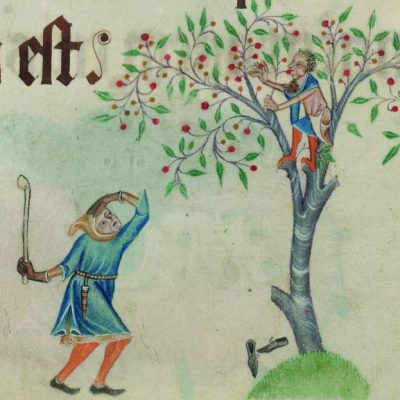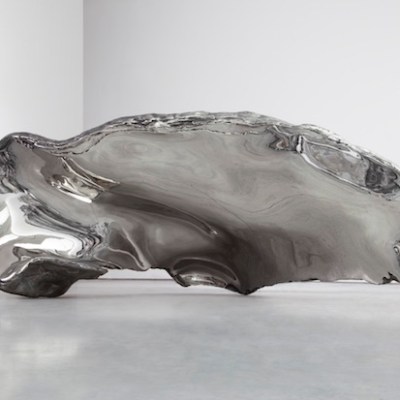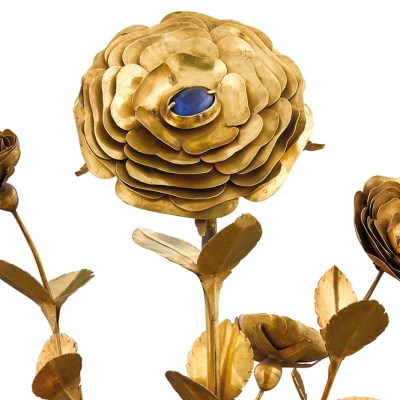From the June 2022 issue of Apollo. Preview and subscribe here.
Medieval Christians did not distinguish between the natural and the supernatural. For these inhabitants of a world at once wild and religious, what we would call ‘nature’ encompassed all Creation: visible and invisible, from the lowly earthworm to the human and even the angelic being, from Tartarus to Heaven and all in between. All these things were the handiwork of God.
Except, the sublunary world was tainted by the consequences of man’s Fall. Medieval descriptions of Eden feature fragrant air, bloom-laden trees and water that bubbles up from the ground but never falls. In the Old English poem The Phoenix, the fire-born bird’s home – a kind of paradisiacal plateau that may or may not be Eden – is also perpetually clement, a condition attributed to its distance from human kingdoms and therefore the grim meteorological consequences of sin. All things unpleasant, discordant and violent in the world reflected, somehow, humanity’s fallen state and ancient ensnarement by the Devil.
Creation’s creatures and climate were, it follows, morally charged. In the 2nd century AD, an anonymous Greek author penned the Physiologus, a compendium of beasts, birds and other creatures (many of which we would call fantastical, such as the phoenix), and included with their descriptions an explanation of their moral qualities. The whale, for instance, might pose as a pleasant island tempting sailors to its shores to moor their boats, but little did they know that, as soon as they kindled their campfire, the titanic fish would drag them to the deeps. So too the fiend, having disguised himself as a safe haven, would drag beguiled souls to hell.
Five centuries later, Isidore of Seville wrote his Etymologies, an encyclopaedia of the world with much the same structure as the Physiologus. It includes some very strange moments, including his insistence that the eye sockets (gena) were formed in the womb by the pressure of the knees (genua) and that humans, in grief, returned to that foetal pose to cry, ‘for nature wanted them to remember the womb of the mother, where they sat in darkness, so to speak, before they came to the light’. The physical world was full of signifiers, which, if read correctly, could serve as waymarkers to salvation.
Page showing notation of the song ‘Sumer is icumen in’ from a 13th-century miscellany of poems, fables, musical and medical texts. British Library, London

The most hopeful signs came in the form of everyday glimpses of divine order, including the (hopefully) immutable rhythms of the passing year. The joyous 13th-century imperative ‘Sumer is icumen in, lhude sing cuccu!’ forms the opening line of the oldest known musical round with English words (British Library, Harley MS 978). Its reference to the arrival of the cuckoo, still a herald of summer, implicitly celebrates those things in the natural calendar dictated by the seasons and, it follows, the distant movement of the spheres.
The celestial origins of nature’s earthly rhythms are argued by the art of a 12th-century manuscript page from Tewkesbury Abbey now in the Bibliothèque nationale de France (MS Latin 9376). It bears a diagram of the Roman (and medieval) system of the months over a lunar calendar. This system of reckoning calls the first day of the month ‘Kalends’, which is the origin of modern English ‘calendar’. ‘Nones’ falls around four days after ‘Kalends’ and eight days before ‘Ides’. Days were counted according to these nodes in the month (the third day before Nones of September, and so on). The diagram consists of five circles, arranged in a quincunx, like the dots on a gaming die. Its middlemost circle, with a more elaborate border than the others, states that the ‘Ides’ of every month fall eight days after ‘Nones’ (this is a consistent rule, hence its roundel’s central position). The four outer circles divide the months up according to the number of days on which ‘Nones’ fall after ‘Kalends’.
The Ides circle is more decorative than the others. Zig-zags, dots and sections of alternate red rectangles and green dots fill the spaces in its border of concentric rings. It seems to me to evoke a medieval cosmological diagram, albeit simplified, with its spheres of fire, stars and planets, as if the artist wanted to prompt an association between the stability of Ides and the perfection of the wider cosmos.
Page from the Chronique de Saint Nicholas de Reims (13th century). Biblithèque nationale de France, Paris Biblithèque nationale de France, Paris

Such an intention is plausible. Richard Foster, a scholar of medieval art, has demonstrated that geometry was applied to the expression of celestial harmony from the modest to the monumental. A century after the Tewkesbury manuscript was made, Italian artists from the Cosmati workshop made a mosaic on the floor of Westminster Abbey, just in front of the high altar, with a giant quincunx – the same arrangement of five circles as in the diagram – enclosing a great round slab of onyx. The border inscription ends, ‘the spherical globe here shows the archetypal macrocosm’. Perhaps the Tewkesbury artist was operating within the same tradition.
However, the page’s visual ploys do not end there. Its border is embellished with four vegetal motifs. Starting in the top right-hand corner, the viewer sees first a small, blue stem with barely-there leaves, tucked in close to the border. Moving clockwise round the page, the next corner bears a larger red frond with two pairs of unfurling leaves cupping a round bud or fruit. After that comes a spray of green leaves on a long stalk, larger by far than the first two: proud and aestival. Finally comes a pair of fronds enclosing a pod or bud, blue once more. This one has been corrected to look more closed: an erased image of open foliage can be seen faintly underneath.
The border motifs appear to depict the year’s progression from dearth to plenty, chiming with and framing the simplified cosmological diagram. Without them, the page might have been nothing more than a dry explanation of the months. Instead, it celebrates an earthly manifestation of divine order. One need not share the maker’s faith to delight in their work; a single leaf adorned with wonder at the vast mechanisms of Creation.
The Cosmati Pavement in the Muniments Room of Westminster Abbey, London, laid down in 1268. Photo: © Dean and Chapter of Westminster

From the June 2022 issue of Apollo. Preview and subscribe here.


